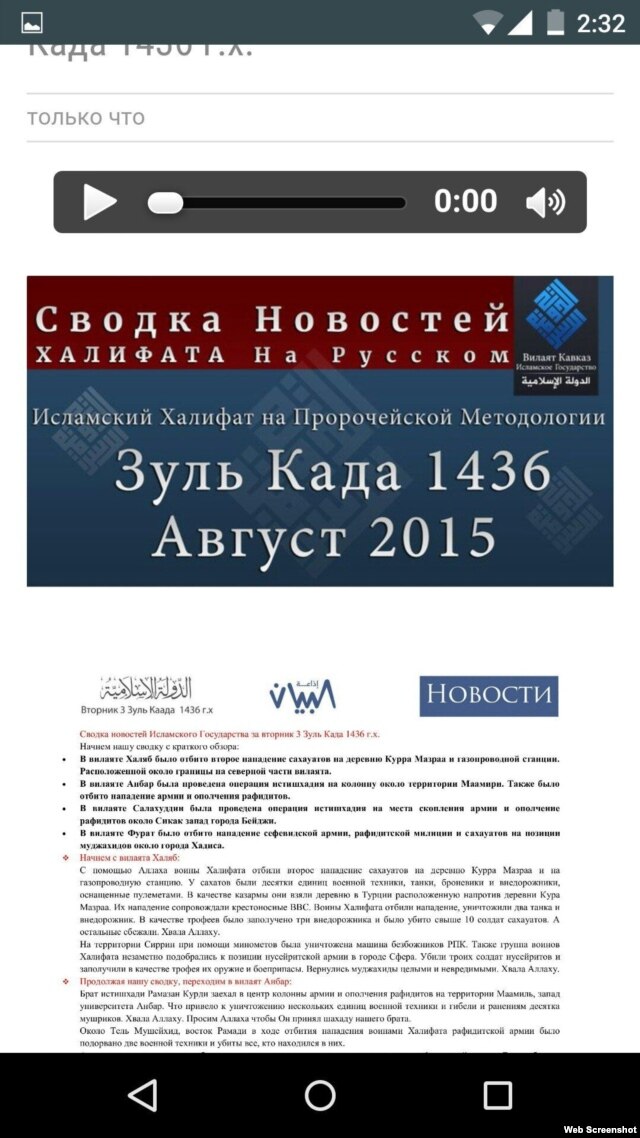
The United Nations published a dispatch on the sexual crimes of illegal immigrants while in detention. So….rather than whine about Donald Trump, hey UN, go knock on the doors of the White House and that of Jeh Johnson’s office.
At least Donald Trump deserves real praise for raising the verbal flags on the issue of immigration.
Sheesh, get a load of this.

Violence Against Women is the Dark Underbelly of The USA’s Migrant Detention System
Donald Trump is fond of ascribing violence in American cities to immigrants. He has even gone so far as to propose a Constitutional amendment that would erase the bedrock law of giving citizenship to any baby born on American shores.
But what about violence inflicted on migrants once they crossed the border? The fact is, many who come to the USA fleeing violence–particularly women–are subject to abuse upon arrival.
Central American women, detained in Texas last year, alleged sexual abuse in detention. Many were asylum-seekers. Some had suffered sexual violence back home. But the nightmare was not over. Guards took them from their cells for sex, women said. They groped mothers in front of their children. Playing on detainees’ desperation, guards told women they would help them once released – but in exchange for sex.

The horror stories hardly stop there. Transgendered women especially are at risk. Despite identifying as female, they are often placed in all-male units. Nicoll Hernández-Polanco, one transgendered woman detained in Arizona, fled Guatemala seeking asylum from persecution based on gender identity. In six months in all-male detention, she alleged that male guards constantly groped and insulted her. Another male detainee sexually assaulted her. When she protested these conditions, she was put in solitary confinement, she said.
These are only a few of many more sexual abuse allegations. The Government Accountability Officeinvestigated over 200 such complaints filed from 2009 to 2013. Yet even this number is an underestimate. Detainees often avoid reporting incidents, fearing retaliation or re-traumatization.
The sexual abuse of migrants in detention centers is the dirty underbelly of the USA’s migrant detention system. It’s a problem that has been known to authorities for years, yet there has not been sufficient effort to clamp down on these kinds of criminal activities that prey on deeply vulnerable women.
So what can be done to stop the abuse?
For starters, freeing certain detainees would probably help. Last month, a federal judge ordered the Department of Homeland Security (DHS) to release mothers and children detained together. (The Texas women who alleged sexual abuse had been in such a family-detention center.) While a welcome change, this one step is far from a solution. Thousands of women are still detained. They are still potential victims of abuse.

There are broader, systemwide changes that might also push the needle in the right direction.
For one, the DHS does not follow guidelines set by the Prison Rape Elimination Act (PREA). These rules include more checks, training, and restrictions on guards. A first step is to improve compliance with PREA. Yet even that would only go so far. Detainees, like prisoners, are inherently vulnerable to abuse.
Also, many detainees are simply waiting to go to court. They have been convicted of no crime and pose no security threat. Detention is a drastic method just to ensure court attendance. Detainees might stay locked up for months. Each day they spend in detention, they remain at risk of abuse.
Finally, alternatives to detention already exist in many countries. In the USA, effective methods include social services and legal representation. Asylum-seekers are very likely to pursue their cases, even with no supervision. With a better chance in court, people are more likely to show up for hearings. They need not be locked up beforehand.
Changes will be slow. The detention system is entrenched. To comply with Congressional budget directives, DHS must detain at least 34,000 people a day. Politicians must change this mandate to make detention reform possible.
The United Nations can play a role. It has already urged US compliance with PREA in detention centers. It can make more Americans aware of the abuses in detention centers and the alternatives to detention. Many voters know little about immigration detention, which happens in remote sites. Alternatives to detention may be hard to imagine. The UN can help US advocates see how other countries have successfully used alternatives. With this knowledge, advocates can press for reforms to detention.
No immigration system should allow abuses in detention. Women fleeing violence must not suffer again. Asylum-seekers to the US must truly find refuge there.

*** Hold on…while this is a self inflicted wound at the hands of the Obama doctrine on immigration and while Jeh Johnson is his corrupt soldier…there is more they are hiding and with purpose.
STONEWALLED: Feds Hide Fiscal Details About Vast Operation To Resettle Illegal Alien Minors
Illegal aliens who show up at the border have been resettled all across United States of America instead of being detained and deported, as Donald Trump recently called for in his new immigration plan.
Breitbart: According to data from the Justice Department obtained by Breitbart News, 96 percent of Central Americans caught illegally crossing into the country last summer are still in the United States. Now Breitbart News has learned exclusively that a Freedom of Information Act (FOIA) request from a pro-security group about the cost of this operation is being stonewalled.

In January of 2015, the Immigration Reform Law Institute, on behalf of the Federation for American Immigration Reform (FAIR), filed a FOIA request to discover the cost of accommodating the tens of thousands of illegal unaccompanied minors who came across the border encouraged by President Obama’s 2012 executive amnesty for illegal youths.
The FOIA letter made five requests of the Immigration and Customs Enforcement (ICE) agency: that the federal agency detail (1) the costs of building of family detention centers; (2) the costs of apprehending, processing and detaining unaccompanied minors; (3) the costs transporting, transferring, removing and repatriating unaccompanied minors; (4) the costs related to ICE’s representation of government in removal procedures involving unaccompanied minors; and (5) the number of instances where objections to the return of unaccompanied minors were raised by the governments of Guatemala, Honduras and El Salvador.
The federal agency, however, refused to answer many of these questions– instead only partially answering two of the five requests. The agency provided only the costs of transporting, transferring and removing illegal minors, as well as the costs of the man-hours such tasks required. Those costs totaled $58.2 million—quadrupling ICE’s costs of $15.6 million in the year previous.

FAIR told Breitbart News that the agency did not provide clear documentation nor explanation as to how it arrived at this estimation.
FAIR asserts that, “The failure to provide most of the cost information related to the surge of [unaccompanied minors] indicates that the government has either failed to properly document those costs, or is refusing to reveal them.”
Because this FOIA request only inquired into the fiscal impact on the Immigration and Customs Enforcement (ICE) agency– it does not at all take into account the cost incurred by the Department of Health and Human Services (HHS) nor the public education system. Because most of the unaccompanied minors were turned over to HHS following their apprehension, FAIR notes that HHS’ costs “for providing shelter, food, education, health care and other services, likely vastly exceed additional costs incurred by ICE.”
The flood of minors has also placed fiscal strains on our public education system. FAIR notes that, “68,541 [unaccompanied minors] were apprehended entering the U.S. Virtually all of them have been allowed to remain in the U.S., at least temporarily.”
Because federal law dictates that all children are entitled to an education regardless of their immigration status, the fiscal burden of educating these students has fallen onto our public education system.

As FAIR notes, educating 68,541 illegal immigrant children at “an average annual cost of $12,401 per child enrolled in K-12 education, the annual cost to local schools is at least $850 million. However, since virtually all of the [unaccompanied minors] are non-English proficient, the actual costs are likely substantially greater.”
The increased costs and difficulties associated with educating illegal minors from poor and developing countries has been well-documented. As Fox News Latino reported in June of this year, the border surge has left many “schools struggling with influx of unaccompanied minors.” While the federal government’s policy of releasing illegal minors into American communities imposes burdens all across our nation’s education system, it will perhaps hurt minority American students most profoundly, by straining the educational resources needed in their communities.

For instance, New York’s Hempstead School District, which is a 96 percent black and Hispanic district, had about 6,700 students dispersed amongst its 10 schools and usually receives an average of a couple hundred new students every year. “However, last summer’s enrollment skyrocketed to about 1,500 new kids – most of them undocumented immigrants.” Fox News Latino writes, “The crush of new enrollees left the district scrambling, forcing it to dip into its emergency reserves to shell out more than $6 million to hire more English as a Second Language teachers and additional staff to alleviate overcrowded classrooms. Still, it has not been enough. The average classroom in the district now has about 40 to 50 children and [as one teacher explained is] posing a safety issue… ‘You have to understand,’ [one teacher said], ‘many of the children are not even proficient in their native language, Spanish, and now we have to teach them how to speak English. That can be very difficult.’”
Deporting instead of resettling illegal immigrants would save taxpayer dollars in two ways.
First, by deterring future border crossings, it would reduce the amount of illegal immigration in the future. As FAIR explains, refusing to implement immigration law has only encouraged more illegal immigrants to unlawfully enter the United States: “In July 2015, the Government Accountability Office confirmed that President Obama’s Deferred Action for Childhood Arrivals [DACA] program played a substantial role in triggering the surge of [unaccompanied minors] in 2014.”

Second, deporting rather than resettling illegal immigrants would save the costs of feeding, clothing, housing, educating, hospitalizing, and caring for illegal immigrants and their relatives. A previous study conducted by FAIR documented that illegal immigrants cost U.S. taxpayers about $113 billion every year. After FAIR explains that by comparison, “The estimated cost of deporting an illegal alien is $8,318. Using just the partial enumerated $58.2 million costs to ICE and the conservative $850 million estimate for education of [unaccompanied minors] resettled in the U.S., the amount of taxpayer money spent on dealing with unaccompanied minors would have paid for the removal of an additional 109,000 illegal aliens.”





